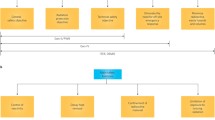Abstract
Today most current fusion research and development activity is based on the expectation that the D–T reaction will be used for the first generation of fusion reactors. This mixture is the premier candidate for a fusion fuel on account of its outstanding energy gain. Fusion reactors will produce neither the problematic emissions now experienced from fossil-fuel-burning power plants nor the long-lived fission products and transuranic elements resulting from fission reactors. Even though, tritium is a radioactive isotope of hydrogen with 12.32 years half-life that exposes beta radiation. Although its specific activity is relatively weak but because of its gaseous state, it can leak easily from its container and contaminate its surrounding. In order to improving safety and reliability of fusion reactors, research groups jointly investigate radiation hazards resulting from the release of tritium and activation products during normal operations as well as accidental conditions. In this paper, some of the most significant safety and environmental aspects of tritium is briefly discussed.
Similar content being viewed by others
Notes
Intenational Thermonuclear Experimental Reactor.
Linear Energy Transfer.
Cumulative Complementary Frequency Distribution.
References
DOE Handbook, Tritium Handling and Safe Storage (U.S. Department of Energy Washington, D.C. 20585, March 1999)
Vasaru G. (1993) Tritium Isotope Separation. CRC Press Inc., Boca Raton
G. Vasaru, Sources of Tritium, in Proc. of the 2nd International Conference On Nuclear Science and Technology in Iran, Shiraz University, April 2004
Oliphant M. L. E., Harteck P., Rutherford Lord (1934). Proc. Roy. Soc. A 144:692
Alvarez L. W., Cornog R. (1939). Phys. Rev. 2 56:613
L. L. Burger, The Seperation and Control of Tritium, 211B00990, Battelle Pacific Northwest Lab., Richland, Wa (1972)
G. Hut, Tritium as a stratospheric tracer, in nuclear structure, K. Abrahams, K. A. Allaart, and E. R. Diepering (Eds.), (NASIS, Series B no. 67 Plenum Press, New York, 1981)
Technical Reports series no. 421, Management of Waste Containing Tritium and Carbon-14, (Printed by the IAEA, in Austria, 2004)
Craig H., Lal D. (1961) The production rate of natural tritium. Tellus 13:85
J. Jousel, Note CEA-N-1685, CEN-Saclay (1974)
G. Bal, Note CEA-N-468, CEN-Saclay (1964)
McKAY H. A. C. (1979) Eur. Appl. Res. Rep., Nucl. Sci. 1:599
A review of the prospects for laser induced thermonuclear fusion, AECL-4840 (Chalk River, Ontario, 1974)
A. A. Harms, K. F. Schoepf, G. H. Miley, and D. R. Kingdon, Principles of Fusion Energy (World Scientific Press Inc., 2000)
H. A. C. McKAY, Proc. of the International Symposium of Management of Gaseous Wastes from Nuclear Facilities, IAEA, Vienna, 1980, p. 59
Taylor N. P. (2005) Fusion Sci. Technol. 47(1):959
B. Brandt, H. Th. Klippel, and W. Schuurman, Report RR-77-8 reviewed and updated, Rijnhuizen report, 81 (1981)
R. A. Ristinen and Jack J. Krauslaar, Energy and the Enviroment (John Wiley & Sons Inc., 1999)
Keishiro Niu, Nuclear Fusion (Cambridge University Press, 1989)
Terry Kammash, Fusion Reactor Physics, Principles and Technology (Ann Arbor Science Publishers, 1975)
Dean S. O. (1998). J. Fusion Energy 17(2):151
Nevins W. M. (1998). J. Fusion Energy 17(1):25
S. O. Dean, J. Fusion Energy, 23, No. 2, 111 (June 2004, © 2005)
P. E. Coyle, IAEA-SM-232/102, in Proceeding of the symposium Behaviour of Tritium in the Environment, San Francisco, 1978, p. 139
Goldston R., Abdou M., Baker C., Campbell M. (2002). J. Fusion Energy 21(2):61
Tahir N. A., Hoffman D. H. H. (1998). Fusion Technol. 33:164
Atzeni S., Ciampi M. L. (1997). Nuclear Fusion 37(12):1665
Khoda-Bakhsh R., Hora H., Miley G. H. (1993). Fusion Technol. 24:28
Khoda-Bakhsh R., Hora H., Miley G. H., Stening R. J., Pieruschka P. (1992). Fusion Technol. 22:50
T. M. Krishnamoorthy, G. Solis De Bravo, N. B. Juan, and A. Yuthamanop, IAEA-SM-232/100, in Proceeding of the Symposium Behaviour of Tritium in the Environment, San Francisco, 1978, p. 385
D. J. Mewissen, M. E. Furedi, A. S. Ugarte, and J. H. Rust, IAEA-SM-232/63, in Proceeding of the Symposium Behaviour of Tritium in the Environment, San Francisco, 1978, p. 469
Kolbasov B. N. (1993). J. Fusion Energy 12(1/2):121
Murata M., Yamamoto H., Matsushita K. (1992). Fusion Technol. 21:673
ICRP-60, The International Commission of Radiological Protection, ICRP (Pergamon Press, 1990)
Cember H. (1983) Intraction to Health Physics. 2nd Ed., Pergamon Press, New York, Oxford
Petti D., McCarthy K. (2000). Fusion Sci. Technol. 37(1):1
J. Raeder, et al., Safety and Environment for ITER – Specialists Meeting – Record and Conclusions, ITER-TN-SA-8-3 (August 1988)
Latkowski J. F., Vujic J. L. (1998). Fusion Technol. 33:298
A. C. Upton, Phys. Today, 34 (August 1991)
Raskob W. (1992). Fusion Technol. 21:636
Yoshida S., Murata I., Takahashi A. (1998). Fusion Technol. 34:656
Cadwallader L. C. (2003). Fusion Sci. Technol. 44(2):369
J. E. Villagran and D. W. Whillians, Helth Physics Society Meeting (New Orleas, 1984)
McConville G. T., Wood C. M. (1995). Fusion Technol. 28:905
R. B. Cumming, G. A. Sega, and M. F. Walton, IAEA-SM-232/78, in Proceeding of the Symposium Behaviour of Tritium in the Environment, San Francisco, 1978, p. 463
W. Raskob, Report Kfk-4605, Kernforschungszentrum Karlsruhe (1990)
Raskob W. (1993). J. Fusion Energy 12(1/2):149
Holland D. F., Cadwallader L. C., Piet S. J. (1992). Fusion Technol. 21:1989
Cadwallader L. C. (2005). Fusion Sci. Technol. 47(1):983
Author information
Authors and Affiliations
Corresponding author
Rights and permissions
About this article
Cite this article
Alizadeh, E. Environmental and Safety Aspects of Using Tritium in Fusion. J Fusion Energ 25, 47–55 (2006). https://doi.org/10.1007/s10894-006-9000-2
Published:
Issue Date:
DOI: https://doi.org/10.1007/s10894-006-9000-2




